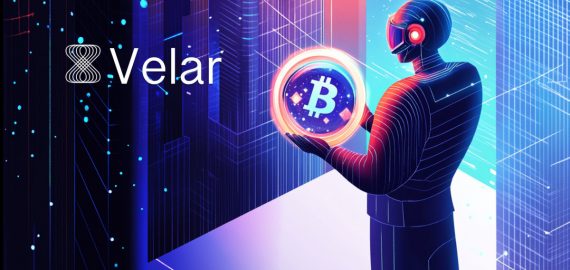Scalping vs. Swing Trading: Choosing the Best Strategy for BERA*
$BERA
As a trader, selecting the right strategy is crucial for success in the cryptocurrency market. When it comes to trading BERA, two popular strategies to consider are scalping and swing trading. In this article, we'll delve into the details of each strategy, exploring their pros and cons, and helping you determine which one suits you best for trading BERA.
Scalping Strategy
Scalping is a short-term trading strategy that involves making multiple small trades throughout the day. Scalpers aim to capitalize on small price movements, typically within a few minutes or hours.
Pros of Scalping:
1. _Potential for high returns_: Scalping can generate significant returns, especially during periods of high market volatility.
2. _Flexibility_: Scalpers can trade at any time, as long as the market is open.
3. _Reduced exposure_: Scalping involves short-term trades, which means less exposure to market fluctuations.
Cons of Scalping:
1. _High risk_: Scalping involves making multiple trades, which increases the risk of losses.
2. _Time-consuming_: Scalping requires constant monitoring of the market, which can be time-consuming and stressful.
3. _Transaction costs_: Scalping involves making multiple trades, which can result in higher transaction costs.
Swing Trading Strategy
Swing trading is a medium-term trading strategy that involves holding trades for several days or weeks. Swing traders aim to capitalize on larger price movements, typically within a few days or weeks.
Pros of Swing Trading:
1. _Lower risk_: Swing trading involves holding trades for longer periods, which reduces the risk of losses.
2. _Less time-consuming_: Swing trading requires less frequent trades, which means less time spent monitoring the market.
3. _Lower transaction costs_: Swing trading involves fewer trades, which results in lower transaction costs.
Cons of Swing Trading:
1. _Potential for lower returns_: Swing trading may generate lower returns compared to scalping, especially during periods of low market volatility.
2. _Less flexibility_: Swing traders are committed to holding trades for longer periods, which means less flexibility to adjust to changing market conditions.
3. _Increased exposure_: Swing trading involves holding trades for longer periods, which means increased exposure to market fluctuations.
Which Strategy Suits You Best for BERA?
To determine which strategy suits you best for trading BERA, consider the following factors:
1. _Risk tolerance_: If you're risk-averse, swing trading may be a better fit. If you're willing to take on more risk, scalping may be a better option.
2. _Time commitment_: If you have limited time to dedicate to trading, swing trading may be a better fit. If you have more time to monitor the market, scalping may be a better option.
3. _Market conditions_: If the market is highly volatile, scalping may be a better option. If the market is less volatile, swing trading may be a better fit.
4. _Personal goals_: If you're looking for quick profits, scalping may be a better option. If you're looking for more stable returns, swing trading may be a better fit.
Conclusion
Scalping and swing trading are both viable strategies for trading BERA. Ultimately, the best strategy for you will depend on your individual risk tolerance, time commitment, market conditions, and personal goals. By understanding the pros and cons of each strategy and considering your individual circumstances, you can make an informed decision about which strategy suits you best for trading BERA.
Key Takeaways
1. Scalping involves making multiple small trades throughout the day, aiming to capitalize on small price movements.
2. Swing trading involves holding trades for several days or weeks, aiming to capitalize on larger price movements.
3. Scalping offers potential for high returns, flexibility, and reduced exposure, but also involves high risk, time-consuming monitoring, and higher transaction costs.
4. Swing trading offers lower risk, less time-consuming monitoring, and lower transaction costs, but also involves potential for lower returns, less flexibility, and increased exposure.
5. The best strategy for trading BERA depends on individual risk tolerance, time commitment, market conditions, and personal goals.
$ LAYER
This is a good, concise summary of UniLayer (LAYER) as of February 11, 2025. Here are some of its strengths and potential areas for improvement:
Strengths:
* Clear and Concise: The summary provides key information about UniLayer, including its purpose, features, current price, trading volume, circulating supply, market cap, and historical price data.
* Balanced Perspective: It acknowledges both the bearish signals (price decline, recent low) and the potential for future growth (platform development, token utility).
* Emphasis on Risk and Research: It correctly stresses the importance of thorough research and risk assessment before investing.
* Relevant Data: The inclusion of specific numbers (price, volume, supply, market cap) grounds the summary in reality.
Potential Areas for Improvement:
* Deeper Dive into Token Utility: While it mentions the LAYER token's role, the summary could benefit from briefly explaining how the token is used within the UniLayer ecosystem. Does it give holders governance rights? Is it used for staking, transaction fees, or other purposes? This is crucial for understanding its value proposition.
* Contextualize Trading Volume: While the 24-hour trading volume is provided, it's not contextualized. Is this high or low compared to other similar platforms or the token's historical volume? This would help readers understand the current trading activity.
* Competitive Landscape: Mentioning UniLayer's key competitors and how it differentiates itself would add valuable context. What makes it stand out from other decentralized trading platforms built on Uniswap?
* Development Updates: While it mentions "ongoing development," briefly mentioning any recent updates or upcoming plans could provide a more positive outlook, if applicable. This would help investors assess the platform's potential.
* Caution Against Investment Advice: While the summary emphasizes research, explicitly stating that it does not constitute investment advice is always a good practice.
Example of Enhanced Section (Token Utility):
"The LAYER token plays a crucial role in the UniLayer ecosystem. It is used for [list specific uses, e.g., governance voting on platform proposals, staking to earn rewards, paying transaction fees at a discount, participating in exclusive features]. This utility is designed to incentivize holding and using the LAYER token, potentially driving demand and value."
Example of Enhanced Conclusion:
"In conclusion, while current indicators may suggest a bearish sentiment towards LAYER, it's essential to consider both the inherent risks and the potential rewards. The platform's ongoing development and the utility of the LAYER token within the UniLayer ecosystem may offer potential for future growth. However, this analysis is for informational purposes only and does not constitute investment advice. As with any investment, conducting thorough research and assessing one's risk tolerance are crucial steps before making a decision."
$LAYER
This is a good, concise summary of UniLayer (LAYER) as of February 11, 2025. Here are some of its strengths and potential areas for improvement:
Strengths:
* Clear and Concise: The summary provides key information about UniLayer, including its purpose, features, current price, trading volume, circulating supply, market cap, and historical price data.
* Balanced Perspective: It acknowledges both the bearish signals (price decline, recent low) and the potential for future growth (platform development, token utility).
* Emphasis on Risk and Research: It correctly stresses the importance of thorough research and risk assessment before investing.
* Relevant Data: The inclusion of specific numbers (price, volume, supply, market cap) grounds the summary in reality.
Potential Areas for Improvement:
* Deeper Dive into Token Utility: While it mentions the LAYER token's role, the summary could benefit from briefly explaining how the token is used within the UniLayer ecosystem. Does it give holders governance rights? Is it used for staking, transaction fees, or other purposes? This is crucial for understanding its value proposition.
* Contextualize Trading Volume: While the 24-hour trading volume is provided, it's not contextualized. Is this high or low compared to other similar platforms or the token's historical volume? This would help readers understand the current trading activity.
* Competitive Landscape: Mentioning UniLayer's key competitors and how it differentiates itself would add valuable context. What makes it stand out from other decentralized trading platforms built on Uniswap?
* Development Updates: While it mentions "ongoing development," briefly mentioning any recent updates or upcoming plans could provide a more positive outlook, if applicable. This would help investors assess the platform's potential.
* Caution Against Investment Advice: While the summary emphasizes research, explicitly stating that it does not constitute investment advice is always a good practice.
Example of Enhanced Section (Token Utility):
"The LAYER token plays a crucial role in the UniLayer ecosystem. It is used for [list specific uses, e.g., governance voting on platform proposals, staking to earn rewards, paying transaction fees at a discount, participating in exclusive features]. This utility is designed to incentivize holding and using the LAYER token, potentially driving demand and value."
Example of Enhanced Conclusion:
"In conclusion, while current indicators may suggest a bearish sentiment towards LAYER, it's essential to consider both the inherent risks and the potential rewards. The platform's ongoing development and the utility of the LAYER token within the UniLayer ecosystem may offer potential for future growth. However, this analysis is for informational purposes only and does not constitute investment advice. As with any investment, conducting thorough research and assessing one's risk tolerance are crucial steps before making a decision."

🌐
Blockchain interoperability is one of the biggest challenges in the crypto space, and Analog’s Timechain Network is here to solve it with its revolutionary Proof-of-Time (PoT) consensus mechanism. By enabling seamless, decentralized, and secure cross-chain communication, Analog is reshaping how blockchains interact.
🔹 How Timechain Network Works
🔸 Proof-of-Time (PoT): A novel consensus mechanism that prioritizes timestamped transactions for secure cross-chain data transfers.
🔸 Omnichain Interoperability Protocol (OIP): Allows smart contracts and dApps to interact across multiple blockchains.
🔸 Decentralized Event Sourcing (DES): Captures real-world & blockchain-based events for accurate cross-chain transactions.
🔸 Time Nodes: Validator nodes that verify & relay transactions across chains, eliminating the need for third-party bridges.
🔹 Why It Matters
Analog’s Timechain Network enhances scalability, security, and efficiency, benefiting:
✅ DeFi – Enables seamless asset transfers across blockchain networks.
✅ NFT Marketplaces – Ensures NFTs retain authenticity & metadata when moving across chains.
✅ Gaming & AI – Facilitates cross-chain gaming assets & AI-driven smart contracts.
✅ Supply Chain & Social Media – Enables real-time tracking & decentralized social platforms.
🔹 The Future of Cross-Chain Communication
With its decentralized architecture, scalability, and advanced security, Analog’s Timechain Network is set to revolutionize how blockchains connect and collaborate. As the blockchain ecosystem expands, interoperability is key—and Analog is leading the way.
🔥 Are you ready for a truly interconnected blockchain future? Let’s discuss in the comments! 👇🚀
#Analog #Timechain #Blockchain #Crypto #Interoperability #DeFi #Web3 #Gaming #NFT$ANLOG

This is a good, concise summary of UniLayer (LAYER) as of February 11, 2025. Here are some of its strengths and potential areas for improvement:
Strengths:
* Clear and Concise: The summary provides key information about UniLayer, including its purpose, features, current price, trading volume, circulating supply, market cap, and historical price data.
* Balanced Perspective: It acknowledges both the bearish signals (price decline, recent low) and the potential for future growth (platform development, token utility).
* Emphasis on Risk and Research: It correctly stresses the importance of thorough research and risk assessment before investing.
* Relevant Data: The inclusion of specific numbers (price, volume, supply, market cap) grounds the summary in reality.
Potential Areas for Improvement:
* Deeper Dive into Token Utility: While it mentions the LAYER token's role, the summary could benefit from briefly explaining how the token is used within the UniLayer ecosystem. Does it give holders governance rights? Is it used for staking, transaction fees, or other purposes? This is crucial for understanding its value proposition.
* Contextualize Trading Volume: While the 24-hour trading volume is provided, it's not contextualized. Is this high or low compared to other similar platforms or the token's historical volume? This would help readers understand the current trading activity.
* Competitive Landscape: Mentioning UniLayer's key competitors and how it differentiates itself would add valuable context. What makes it stand out from other decentralized trading platforms built on Uniswap?
* Development Updates: While it mentions "ongoing development," briefly mentioning any recent updates or upcoming plans could provide a more positive outlook, if applicable. This would help investors assess the platform's potential.
* Caution Against Investment Advice: While the summary emphasizes research, explicitly stating that it does not constitute investment advice is always a good practice.
Example of Enhanced Section (Token Utility):
"The LAYER token plays a crucial role in the UniLayer ecosystem. It is used for [list specific uses, e.g., governance voting on platform proposals, staking to earn rewards, paying transaction fees at a discount, participating in exclusive features]. This utility is designed to incentivize holding and using the LAYER token, potentially driving demand and value."
Example of Enhanced Conclusion:
"In conclusion, while current indicators may suggest a bearish sentiment towards LAYER, it's essential to consider both the inherent risks and the potential rewards. The platform's ongoing development and the utility of the LAYER token within the UniLayer ecosystem may offer potential for future growth. However, this analysis is for informational purposes only and does not constitute investment advice. As with any investment, conducting thorough research and assessing one's risk tolerance are crucial steps before making a decision."


 Precio más bajo
Precio más bajo Precio más alto
Precio más alto 















































